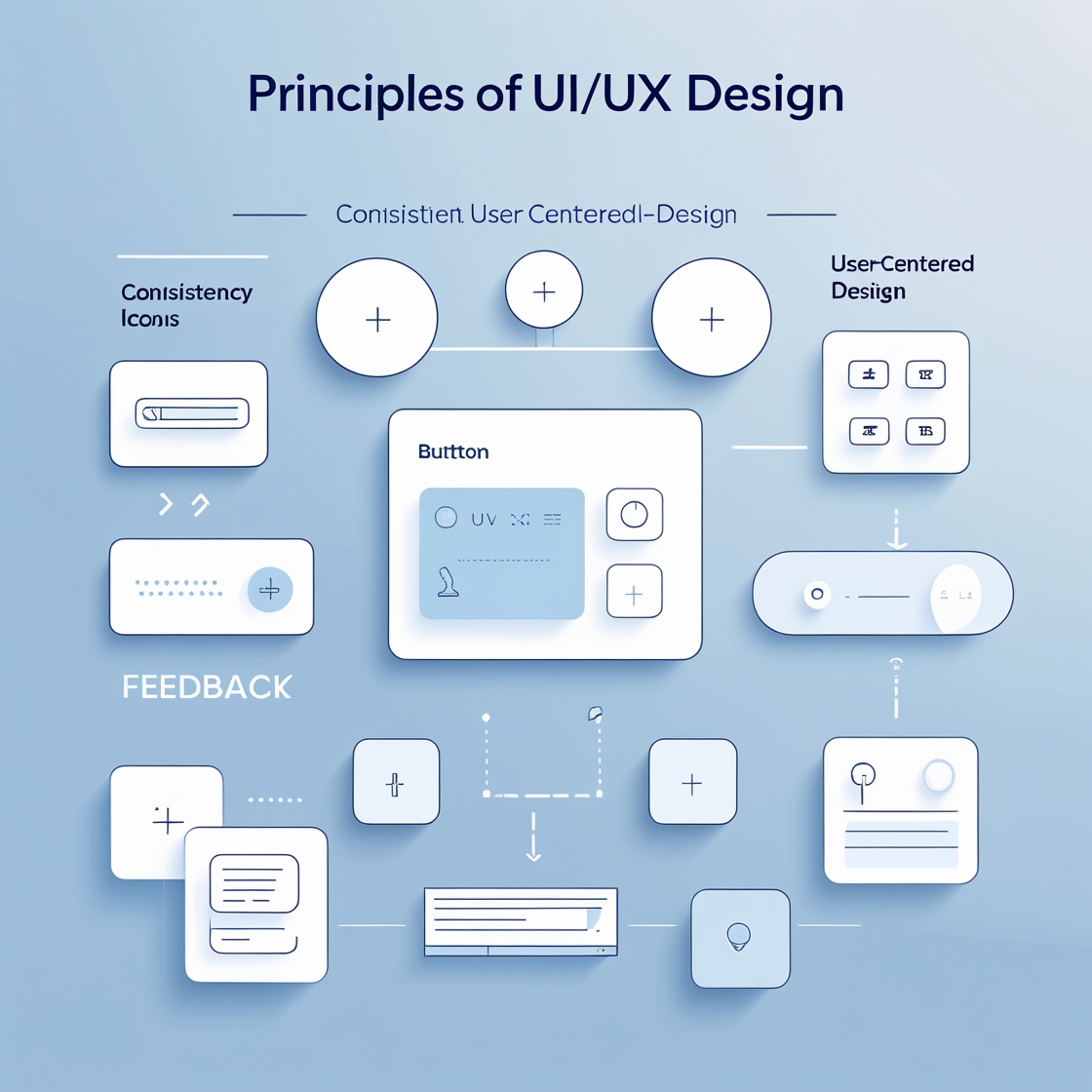Subtotal $0.00
What is UI/UX Design? Importance, Principles, and Best Practices
Introduction to UI/UX Design
UI/UX design plays a pivotal role in creating digital experiences that are not only visually appealing but also intuitive and user-friendly. In today’s competitive digital landscape, businesses are prioritizing UI (User Interface) and UX (User Experience) design to ensure customer satisfaction and retention. Furthermore, investing in these designs helps build trust and loyalty among users, which is crucial for long-term success.

The Difference Between UI and UX Design
While often used together, UI design and UX design refer to distinct aspects of the design process. In addition, understanding their differences can significantly improve the overall design strategy:
- UI Design: Focuses on the aesthetics, such as colors, typography, and layout.
- UX Design: Emphasizes the overall experience and functionality, ensuring users can achieve their goals efficiently.
Moreover, the collaboration between UI and UX designers ensures a seamless and cohesive product. For more information, you can read about the role of UI design and definition of UX.
Why UI/UX Design is Important
Good UI/UX design offers numerous benefits, including the following:
- Improved user engagement and satisfaction, leading to higher customer retention.
- Higher conversion rates for websites and apps, directly impacting revenue growth.
- Increased brand loyalty and trust, which are vital for competitive advantage.
Key Principles of UI/UX Design
Successful UI/UX design adheres to these fundamental principles, which serve as a foundation for creating intuitive and impactful designs:
1. User-Centered Design
Design should revolve around user needs and preferences, ensuring accessibility and usability. Furthermore, gathering user feedback throughout the process enhances the final product.
2. Consistency
Maintaining uniformity in design elements, such as buttons, fonts, and navigation, enhances user familiarity. As a result, this reduces cognitive load and improves efficiency.
3. Feedback
Providing immediate feedback, such as animations or error messages, helps users understand their actions. Additionally, clear feedback minimizes confusion and enhances user trust.

Best Practices for UI/UX Design
Follow these practices to create exceptional digital experiences. Furthermore, they ensure that the design process is efficient and user-focused:
1. Conduct Thorough Research
Understanding your target audience is critical. Use tools like Google Analytics and user surveys to gather insights. Moreover, analyzing user behavior provides actionable data for improvement.
2. Wireframe and Prototype
Create low-fidelity wireframes to outline the structure and functionality before moving to high-fidelity prototypes. Furthermore, this approach allows designers to iterate quickly and efficiently.
3. Test and Iterate
Regular usability testing helps identify pain points and refine the design. Additionally, iterative improvements based on feedback ensure the design remains user-centered.

Conclusion
Investing in UI/UX design is no longer optional but a necessity for businesses aiming to thrive in the digital age. By adhering to the principles and best practices discussed, you can create engaging and impactful designs that meet user expectations and business goals. Furthermore, embracing innovation in design can set your brand apart from competitors.
Looking to enhance your UI/UX strategy? Contact MYS VN for expert consultation.
